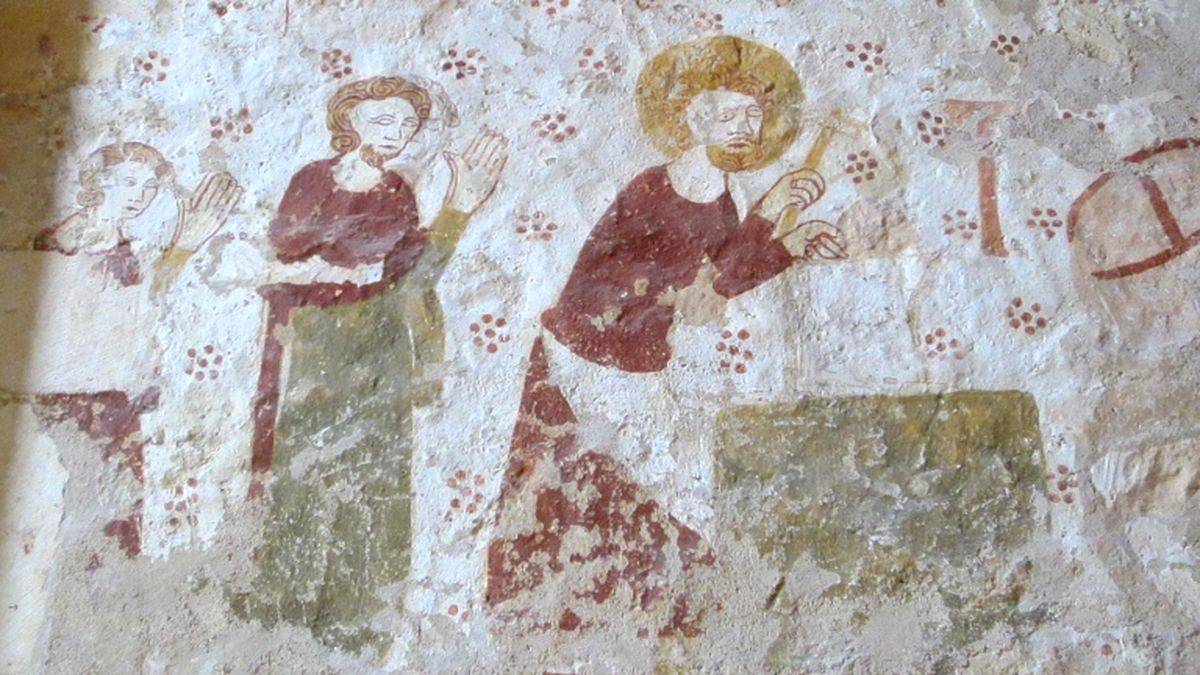 Saint Eloi | ©Anecdotrip.com / CC-BY-NC-SA
Saint Eloi | ©Anecdotrip.com / CC-BY-NC-SAPaintings
The frescos were made between the 12th and the 17th century.
Since the 13th c., painters used cobalt oxide and copper oxide to get blue and green colour.
Before that, they especially used ochre, and that was all...
A mushroom as a paradise
The oldest painting here is the one representing Garden of Eden.
The only representation showing the Knowledge Tree as a giant mushroom!
Her Majesty...
Next, a Virgin Mary in majesty. In majesty?
It means the painter represented her with baby Jesus in her arms, surrounded by an almond-shape (mandorle in French), sitting on her throne.
Eyes and feet
Next, we have a Crucifixion (12th c.): the painter was inspired by paintings from the 9th or 10th c.
How do we know that? Because of the shape of the cross: typical of the 10th century!
Another clue: we see a rather strange representation of Jesus on his cross! He’s still alive, he has no wounds yet and his feet are spread out.
Saint Eloi
On the other side, we have a scene, a miracle of saint Eloi (14th c).
Eloi wears a halo, a hammer in his hand and the hoof in the other one.
A man holds the horse’s leg. Two men stand behind the saint...
Look at their giant hands! It was a kind of trick, to give a little perspective!
A wolf and a fox
Next, we have a scene from the famous medieval novel, Roman de Renart (end of the 13th c).
Renart plays fiddle. Then, a dog up on his legs (maybe Roenel, the mastiff), Chantecler the rooster, a peacock.
